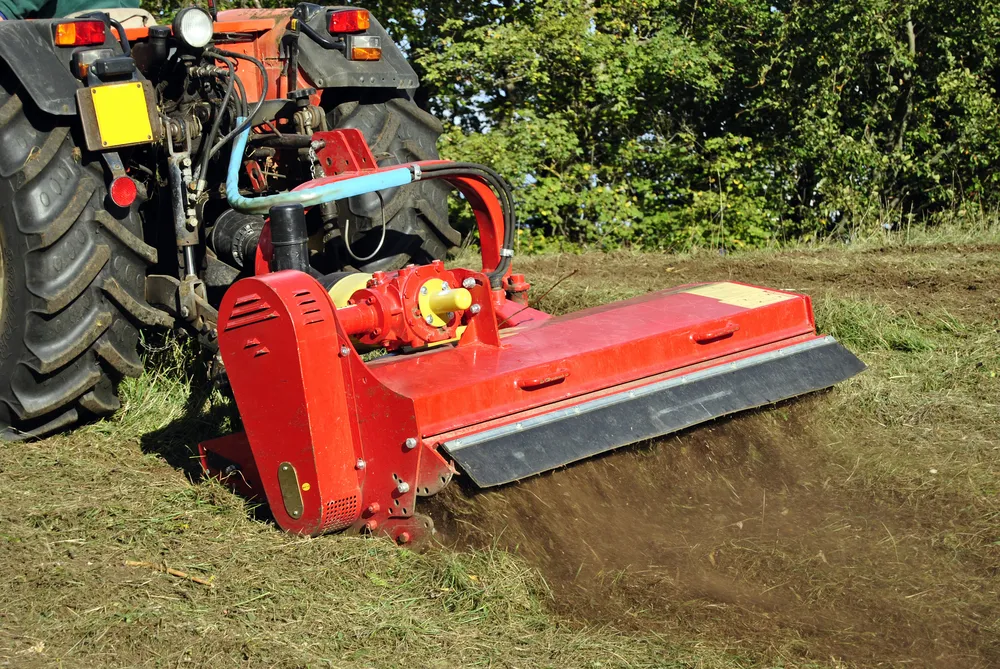Bush Hog equipment stands at the forefront of agricultural and landscaping machinery, celebrated for its robustness and efficient performance. At the core of these powerful machines is the gearbox, a pivotal component that transmits power from the tractor to the equipment, enabling it to tackle heavy-duty tasks with ease. Proper maintenance and timely replacement of gearbox parts are critical for preserving the optimal performance and extending the lifespan of your Bush Hog machinery.
Understanding the Bush Hog Gearbox
The gearbox is a mechanical system designed to alter the power supplied by your tractor into the high torque necessary for intensive cutting and mowing. It's engineered to endure the challenges of slicing through thick vegetation, brush, and small trees. However, gearboxes can wear out over time. Knowing how they work helps in identifying and resolving issues promptly.
Basic Mechanics
A Bush Hog gearbox operates on simple mechanical principles involving gears and bearings that work together to increase the machine's torque. This process involves reducing the tractor's high-speed, low-torque power to low-speed, high-torque output suitable for heavy-duty agricultural tasks.
Common Types
Bush Hog gearboxes vary depending on the equipment type—rotary cutters, finish mowers, etc.—each designed to offer optimal performance for specific tasks. The gear ratio, housing design, and component materials are tailored to withstand different levels of operational stress.
Key Components of the Bush Hog Gearbox
Understanding the components can significantly improve maintenance and troubleshooting processes.
Gears
Gears are the heart of the gearbox, made from high-strength steel to withstand the force and torque required for cutting. They come in various sizes and shapes, including spur and helical gears, each selected for its efficiency and durability in transferring rotational force.
Seals and Bearings
Seals prevent lubricant leaks and stop contaminants from entering the gearbox, while bearings support the rotating shafts, reducing friction and wear. Regular inspection for wear and tear on these components can prevent major failures.
Shafts
Shafts transmit the rotational force from the gearbox to the cutting blades. Common issues with shafts include bending, wear, and fatigue. Regular checks for alignment and signs of wear are essential.
Housing
The housing protects the internal components from external debris and damage. Made from cast iron or steel, it's robust but can suffer from cracks or corrosion. Regular inspections can identify potential housing issues before they lead to more significant problems.
Signs of Gearbox Failure
Identifying early signs of gearbox failure can save time and money. Unusual noises, such as grinding or whining, often indicate gear or bearing issues. Leaks around the seals can lead to lubrication loss and component failure. Performance issues, including difficulty in operation or unusual vibrations, signal potential problems needing immediate attention.
Maintenance Tips for Bush Hog Gearbox
Regular Inspection and Cleaning
Frequent inspections and cleaning of the gearbox can prevent the buildup of debris and identify issues before they escalate. After each use, cleaning the exterior and checking for signs of wear or damage is good practice.
Lubrication
Proper lubrication reduces friction and wear on gears and bearings. Using the right type and amount of lubricant, as recommended by Bush Hog, ensures the gearbox operates smoothly.
Avoiding Common Misuses
Overloading the equipment or using it inappropriately can lead to premature wear or damage. Adhering to operational guidelines and load specifications is crucial for maintaining gearbox integrity.
Step-by-Step Guide to Replacing Bush Hog Gearbox Parts
Safety Precautions and Preparation
Before attempting any repairs, ensure the equipment is turned off and securely supported. Wear appropriate safety gear, and have the necessary tools and replacement parts ready.
Disassembly Instructions
Carefully disassemble the gearbox, noting the placement and orientation of each component. This step is crucial for a successful reassembly.
Identifying and Sourcing Replacement Parts
Match the worn or damaged parts with genuine Bush Hog replacements or equivalent quality parts. Ensuring compatibility and quality is key to a successful repair.
Assembly Tips and Testing Post-Repair
Reassemble the gearbox, following the reverse order of disassembly. Apply new lubricant and test the equipment at a low operational level to ensure everything functions correctly.
Troubleshooting Common Gearbox Problems
Diagnosing issues based on symptoms can guide whether a quick fix is possible or professional help is needed. Familiarity with common problems and solutions can save time and ensure the longevity of your Bush Hog equipment.
Maintaining your Bush Hog gearbox through regular inspection, timely maintenance, and addressing issues promptly can significantly impact the performance and longevity of your equipment. Understanding the basics of gearbox operation, the importance of each component, and how to troubleshoot common problems empowers you to keep your Bush Hog machinery in top condition, ensuring it remains a valuable asset in your agricultural or landscaping endeavors.
